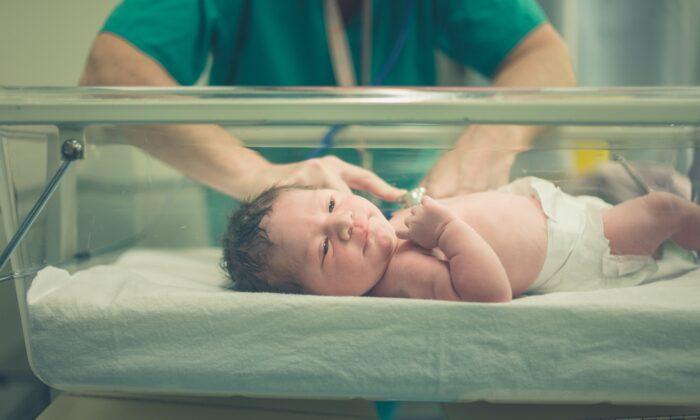Ontario Premier Doug Ford and Health Minister Sylvia Jones announced Monday a plan to tackle the province’s backlog of routine surgeries—such as cataract surgery, knee and hip replacement, and foot surgery—as well as medical scans.
The plan increases the number of surgeries and scans being done in both non-profit and for-profit independent clinics. The procedures will still be paid for by the government.
Ford and Jones responded to concerns that an increased reliance on private clinics might affect quality of care and undermine the public system in various ways.
“Ontarians will always access health care with their OHIP card, never their credit card,” Ford said at the announcement Jan. 16. “A lot of people out there, they want to have the endless debates about who should provide care. All I care about … is that you get the care quickly and safely.”
Three Step Plan
Their plan includes three steps. The first is focused on wiping out a quarter of the wait list for cataract surgeries by having 14,000 of these surgeries performed through new partnerships with clinics in Ottawa, Kitchener-Waterloo, and Windsor.The first step also includes an investment of $18 million in existing clinics, including funds for 49,000 more hours of magnetic resonance imaging (MRI) and computerized tomography (CT) scans.
The second step is expanding the scope of clinics to address regional needs, with a continued focus on cataracts, MRIs, and CTs, along with colonoscopy and endoscopy procedures.
The third step expands the plan to include knee and hip surgeries by 2024. It would also expand the number of MRI and CT scans independent diagnostic centres could do, Jones said.
The third step centres on legislation the government will introduce in February that, if passed, would also strengthen public oversight of the private clinics involved.
Questions About Public-Private Balance
Jones and Ford addressed concerns that this plan would draw staff away from the public health care system to work at private clinics.Jones said clinics apply to participate in the plan, and the application process requires them to outline their staffing plans. “It will very precisely talk about the need to protect our public hospitals and ensure that they are not in any way impacted,” Jones said.
She said Ontario is taking other steps to increase health care manpower in the province, including making it easier for internationally educated doctors to practice. And the government is working with the health care regulatory bodies to make sure licensing for doctors and nurses is happening efficiently.
Dr. Rose Zacharias, president of the Ontario Medical Association, said in a statement emailed to The Epoch Times, “We look forward to working with the government to develop a strategy to make sure these new centres do not take resources away from hospitals or exacerbate existing health human resources challenges.”
Zacharias said she supports the idea of using these clinics overall. “Experience elsewhere has shown that providing outpatient surgeries and procedures in the community greatly improves the patient experience. Patients get their surgeries sooner, have lower rates of infection and get to go home the same day,” she said.
The professional regulatory body for doctors, the College of Physicians and Surgeons of Ontario (CPSO), expressed concerns. Dr. Nancy Whitmore said in a statement emailed to The Epoch Times, “Complex procedures such as hip and knee joint replacement surgeries should remain connected to the hospital system to ensure continuity of care and patient safety.”
Whitmore said the college supports expanding access to procedures at clinics, but remains concerned “about creating further strain on the present health care provider crisis particularly in skilled operating room nurses and anesthesiologists.”
Ford told reporters after the announcement that he was “shocked” by the CPSO’s concerns that the plan would jeopardize quality of care. “What they’re doing is putting in question their own ability to monitor this,” he said. He said private clinics are already doing publicly funded procedures, the current plan expands upon that. “They’re doing it right now, so are they questioning their capacity or their qualifications?”
CPSO declined to respond to Ford’s comments when it sent its statement to The Epoch Times.
Reporters asked Jones multiple times whether for-profit clinics would be allowed to up-sell, for example, a patient goes in for a knee replacement and is told he can get the version covered by OHIP, or he can get a better version for a fee.
She did not directly say this practice would be prohibited, but said the family doctors and others who work with patients up to the point of being referred to these clinics should let the patient know what kind of procedure is necessary and covered by OHIP.
Wait Times
The plan focuses on routine procedures because “it takes the burden off of the hospitals,” Ford said. “The hospitals are going to do the critical surgeries.”He spoke of the impact these surgeries have on quality of life, giving the example of his mother whose condition declined when she was immobilized waiting for a hip replacement before she died.
The wait for diagnostic medical scans—MRIs and CTs—can be life-threatening.
It is unclear, however, how many of these deaths result from not receiving the needed scans and how many are for unrelated conditions.
In 2021, less than 80 percent of patients in Ontario needing cataract surgery, or knee or hip replacement, got it before the benchmark time recommended. Ontario wait times remain, however, considerably shorter than most other provinces.





